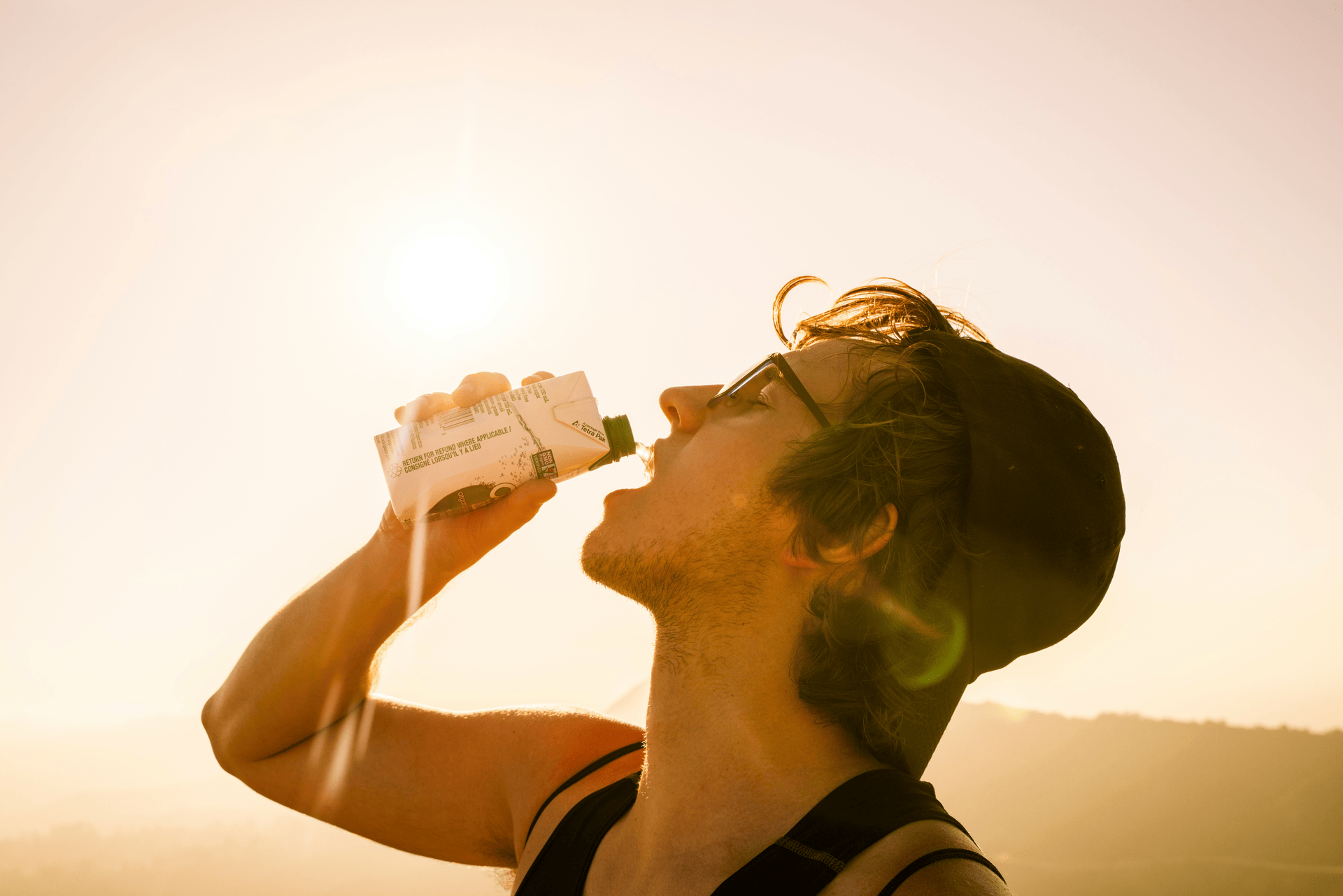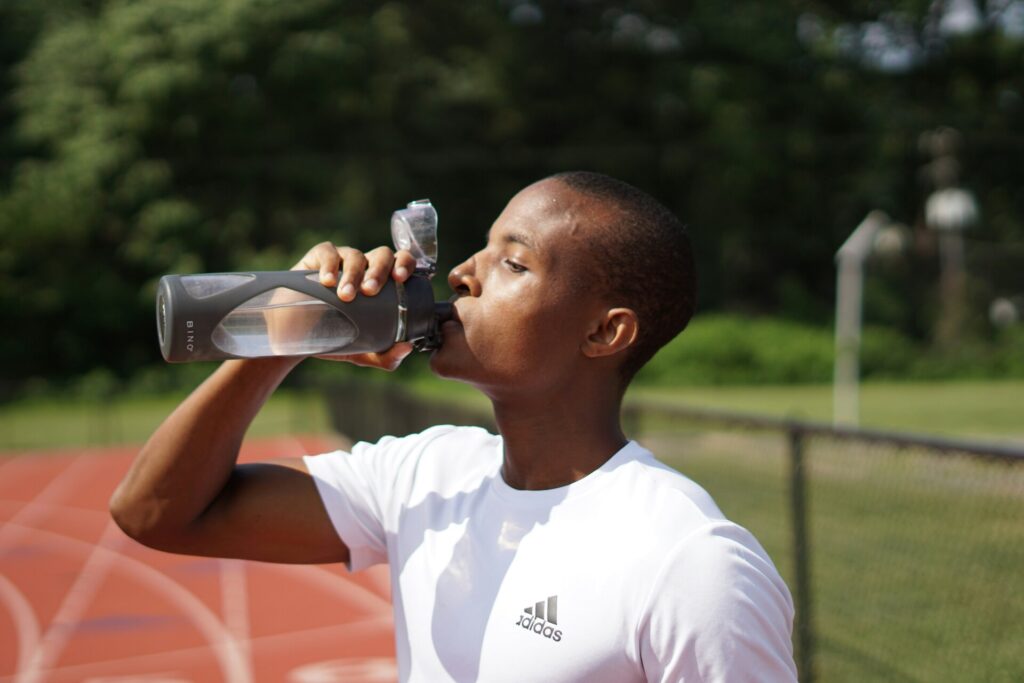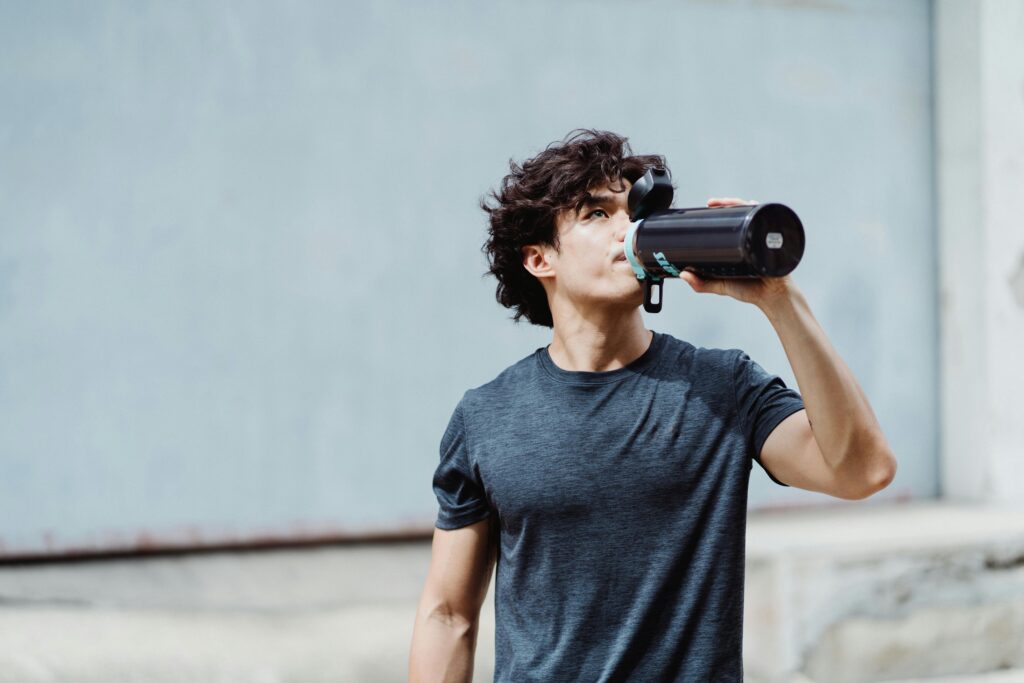Let’s be real, most of us think we are doing hydration right. We bring a water bottle to the gym, take a few sips during the workout, and maybe chug a glass afterward. But here’s the thing: even with good intentions, it’s surprisingly easy to make some of the most common hydration mistakes without even realizing it.
Drinking too much plain water (yep, that’s a thing), skipping electrolytes, or waiting until you are already thirsty are small mistakes that can lead to cramping, dizziness, or fatigue.
The good news? These common hydration mistakes are totally fixable.
This guide breaks down the top hydration errors and how to avoid them with easy, beginner-friendly tips to help you feel better, recover faster, and train stronger.
Mistake #1: Only Drinking When You’re Thirsty
You have probably heard it before: “Just drink when you are thirsty.” Sounds pretty simple, right?
But here’s the catch: thirst is actually a late warning sign. By the time you feel thirsty, your body is already on its way to dehydration.
And even mild dehydration can mess with your workout. It affects your energy, slows your reaction time, and makes it harder to stay focused, not exactly ideal when you are trying to hit your goals.
The easiest way to avoid this common hydration mistake is not to wait for thirst to kick in. Instead, build a habit of sipping water consistently, especially during workouts or any physical activity.
A good target is about 200 to 300 ml (7 to 10 oz) every 15 to 20 minutes during your workout.
Also, you can look at your pee for a quick check-in with your body.
- Pale yellow urine = You are doing great
- Dark yellow or amber urine = Time to rehydrate
It’s one of the easiest (and weirdly effective) ways to know your hydration status.
Mistake #2: Overhydrating Without Electrolytes
Believe it or not, you can actually drink too much water, especially if it is plain water and you are not replacing lost minerals.
When you drink large amounts of water in a short time without balancing it out with electrolytes, it can dilute the sodium in your blood. This condition is called hyponatremia, and while it is rare, it is a serious condition.
Symptoms can sneak up on you, including nausea, headaches, bloating, or even confusion. And in extreme cases, it can be dangerous.
To avoid this, make sure you are not just replacing fluids, you are replacing electrolytes too.
If your workout lasts over an hour, or you are sweating a lot, add sodium and potassium into the mix. That could mean tossing an electrolyte tablet into your water bottle, sipping a low-sugar sports drink, or going for a natural option like coconut water with a pinch of salt.
Mistake #3: Ignoring Electrolyte Loss from Sweat
When we think about sweat, we usually just think “I need to drink water.” But here’s the deal: sweat does not just drain water, it also pulls out essential minerals your body needs to function well, like potassium, sodium, and magnesium.
If you do not replenish those lost electrolytes, you are not really rehydrating. And that’s when the trouble starts, muscle cramps, dizziness, sluggishness, and overall fatigue can creep in, even if you feel like you have been drinking plenty of water.
That’s why it is important to replace what your sweat takes away. Sports drinks or electrolyte tablets can help you stay balanced for long or high-intensity workouts. If you prefer a more natural route, snack on bananas, watermelons, or add a pinch of salt to your water for a quick mineral boost.
Staying on top of your electrolytes can be the difference between powering through your workout or crashing halfway through.
Mistake #4: Skipping Post-Workout Rehydration
You have made it through the workout, you are feeling great, and it’s tempting to just move on with your day.
But here’s the thing: your body is still in recovery mode.
If you do not rehydrate properly, you are leaving gains and energy on the table.
After any workout, you are already in a fluid deficit. That means your body needs water and electrolytes to kickstart muscle repair, restore balance, and help you bounce back faster. Skipping this step can lead to lingering fatigue, slower recovery, and even headaches or cramps later in the day.
To stay ahead of it, aim to replenish fluids within 30 to 60 minutes after training. A good rule of thumb is to drink around 400 to 700 ml (16 to 24 oz) for every pound of body weight lost through sweat.
Pair that with a post-workout snack or shake that includes both electrolytes and protein, and you will help your body recover smarter, not harder.
Recovery doesn’t start with a protein bar. It begins with hydration.
Mistake #5: Not Adjusting Hydration for Weather or Intensity
Hydration is not a one-size-fits-all thing, and that’s where a lot of people get tripped up. What your body needs on a mild indoor gym day is totally different from what it needs during a summer trail run or a high-intensity session.
Hot weather, cold climates, and intense workouts demand unique hydration strategies. Ignoring these variables can lead to overheating, cramps, or sneaky dehydration that hits long after training is over.
So how do you stay ahead of it?
- In hot weather: Hydrate before your workout, sip throughout, and include sodium to replace what you lose in sweat.
- In cold weather: You might not feel thirsty, but you still need fluids. Drink regularly and opt for warm fluids if it helps.
- During HIIT or endurance sessions: Preload with water, sip consistently, and include electrolytes to stay balanced.
Check out our guide to hydration strategies for every condition.
Mistake #6: Relying Too Much on Sugary Sports Drinks
Sports drinks might seem like the perfect go-to after a sweaty session. They are colorful, they promise electrolytes, and they are everywhere.
But here’s the catch: a lot of them contain more sugar than actual hydration support.
Chugging these drinks regularly can lead to blood sugar spikes, energy crashes, and unnecessary calorie intake, which defeats the purpose of working out to feel better and fuel your progress.
If you are reaching for a sports drink, flip the bottle around and read the label.
Look for low-sugar options and list electrolytes like sodium, potassium, and magnesium.
Or better yet, make your own!
Here’s a simple DIY electrolyte drink:
- Coconut water
- A pinch of salt
- Optional: squeeze of lemon or a dash of Himalayan salt for extra minerals
It’s a refreshing, no-fuss way to hydrate without the sugar bomb.
Mistake #7: Not Knowing if You’re Hydrating Correctly
One of the most overlooked from the list of common hydration mistakes is not checking if your hydration routine is actually working. It’s easy to assume that drinking water now and then means you are covered, but your body gives clues when something is off.
Missing the signs of dehydration or overhydration can leave you dragging through your workouts, feeling foggy, or even dealing with cramps and nausea.
Here’s how to tell if your hydration habits are on track:
- Pale yellow = you are doing great
- Dark yellow = drink more water
- Frequent cramps = you might need more sodium
- Bloating or nausea = could be overhydration
- No longer sweating, dizziness, or confusion = red flags, hydrate smartly, and seek help if needed
Think of this as your hydration self-check. It’s simple, quick, and way more accurate than just going by thirst.
Final Thoughts
Hydration isn’t just a fitness checkbox. It’s one of the easiest ways to support your performance and recovery. And the best part? Most hydration mistakes are easy to fix once you know what’s really going on.
Start by making small changes: drink before you get thirsty, time your intake around your workouts, and don’t forget to replace those lost electrolytes. These simple habits can lead to better energy, faster recovery, and fewer frustrating setbacks like cramps or dizziness.
Once you treat hydration like it is part of your training, not just something you do after, your body will start performing the way it’s meant to.
FAQs about Hydration Mistakes
Commonly asked questions…


